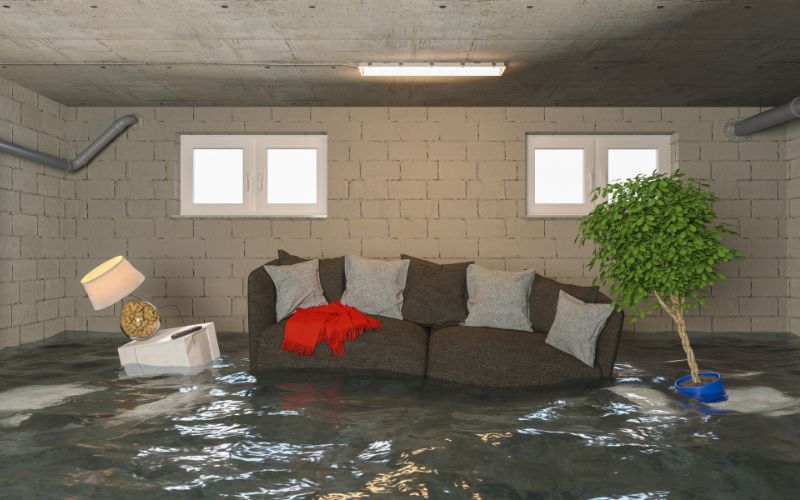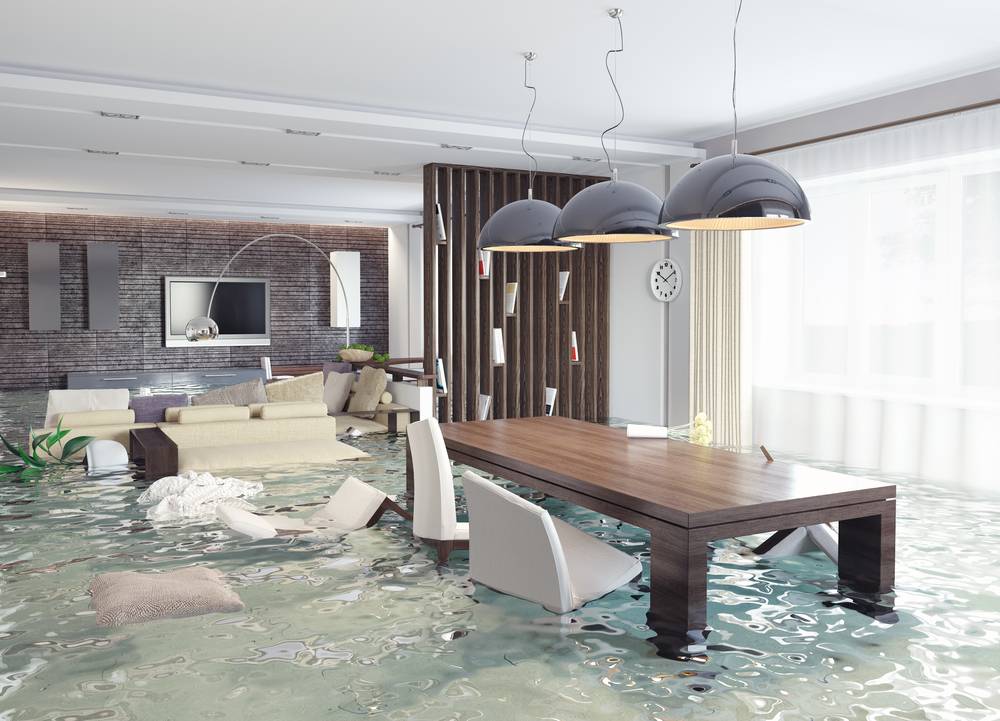
Opening Hours – 24/7
Opening Hours – 24/7

If your home has recently experienced some level of water exposure, time is of the essence! No time should be wasted before you begin taking action to stop the flow of water and resolve the issue. The longer you wait, the more severe the damage will be. And if you’ve just come home from work, or a vacation, to find a flooded basement, there’s no knowing how long that water has been sitting there, seeping into everything it touches. So, if you’re here wondering how to get all that water out of your home, stick around; we’re going to take you through the 6 Steps of Proper Water Extraction to recover and protect your home.
If water is still flowing into your home, you will want to stop that ASAP! Sometimes it can be challenging to know where exactly all of the water is coming from, especially if it has been running for a long time. We suggest heading to your water main and shutting it off there first. This will give you an opportunity to get a closer look at the area and determine where the water was coming from and what started all of this.
Sometimes, it is not safe to conduct a closer inspection yourself (which we will get more into shortly). Especially if the water is knee-deep or you can’t determine if potentially hazardous materials are lingering beneath the surface of the water. The simplest and safest thing to do is shut off the water main and reach out to water extraction experts to take it from there. In some cases, what has caused this water exposure may be very evident, especially if you have just experienced a strong storm or flood.
Right, so before you actually go sloshing about in the water to conduct a closer inspection of the damage, there are several safety procedures that you should implement first. After shutting off the water main, you should next head to your power board and flick off the main switch. The reason for this is that water and power do not mix well. There could be exposed wires hidden in the water or even electrical appliances like a heater.
Water can carry bacteria, contaminants, and even fecal matter that are harmful to encounter. If the water is greywater or blackwater, allowing it to come in contact with your skin, eyes, and mouth could be dangerous and cause quite severe illnesses in a worst-case scenario. Gear up, ideally with coveralls, storm boots (like steel cap work boots or rain boots), a mask, protective goggles, and gloves. If any of the water does come in contact with your skin or eyes, it should be washed out immediately with soap, sanitizer, ad saline solution for your eyes.
Now to the part where you actually start getting all that excess water out of your home! Because of the liquid makeup of water, it is absorbed by almost any material, and that water is not what we are dealing with at this stage. Before you move on to that, you need to deal with the standing water. Standing water is essentially a pool or gathering of water that you can stand in. The sort that you would be able to scoop up if you were to cup your hands together.
If your water damage is extensive, you will likely have a team of water extraction experts conducting this phase for you. They will come equipped with specialized equipment such as submersible pumps, hoses, a truck-mounted empty water tank, and much more. The standing water will either be redirected to a water tank on the truck to be taken away and emptied or to a nearby drainage system. If the cause of the water damage was due to a storm, they would likely opt for the former as your local drainage system will probably be overworked from stormwater and debris.
Now, it’s time to move on to getting rid of the water that has been absorbed into all of your materials and possessions. However, this water isn’t extracted in the same way as it’s been absorbed; those materials will need to be dried out, which takes time. The drying process could take a few days or even a week or more. But, again, it depends on the size of the affected area and the extent of the water exposure.
Your water extraction experts will bring in industrial-strength air movers, dehumidifiers, Wetvacs, and more to salvage as much as possible. Some items, like carpet, may be held onto in an effort to dry it and see how well it dries and recovers. Sometimes you can’t know for sure until it has gone through the drying process. Even if it is able to be dried out, it is somewhat common for the shape of the carpet to be changed and have a ripple effect. Your water extraction experts will test the moisture levels of various objects to gain insight into whether further drying is required.
Once everything has been adequately dried out, using professional methods, it’s time to get in there and start cleaning. Everything that was exposed to the water will need to be cleaned, and even something that wasn’t directly exposed but may have taken on moisture from the air, such as the ceiling or photo frames hanging higher on the walls.
This in-depth cleaning helps to prevent mold growth; your home has an elevated risk of developing mold after a water damage incident. Similar to the drying process, you may have some materials and belongings that do manage to dry out but don’t manage to get 100% back to normal if they are deeply affected. For items such as furniture that were affected by the water damage but still appear salvageable, you can use a specialized furniture cleaner, similar to a Wetvac or steamer. This will help to pull out the bacteria and dirt embedded within the fabric.
Last but not least, it’s time to sanitize and deodorize your room and belongings. Similar to the cleaning process, you’ll need to sanitize every area affected by the water to prevent mold spores from settling on the surface and setting up camp. Mold can grow very quickly in these circumstances. Your water extraction experts will use strong industrial-grade cleaning agents and a portable filtration system (AKA an air scrubber) to eliminate any nasty odors that linger in the air.
What an amazing response! I had a great experience with Restoration Operators – Connecticut! I called them immediately after my house flooded and they came out within 45 min. It’s a great choice!
Amazing job. Our basement flooded twice
and the did outstanding work drying it out
quickly. Very responsive and were very easy
to work with.
I cannot express how grateful I am for the amazing service provided by this sewage cleanup company. They arrived promptly and efficiently cleaned up the mess left by a broken sewer line.
Restoration Operators did an awesome job for us fixing water damage! We would not hesitate to recommend them to friends and to use this company again if the need arises.
